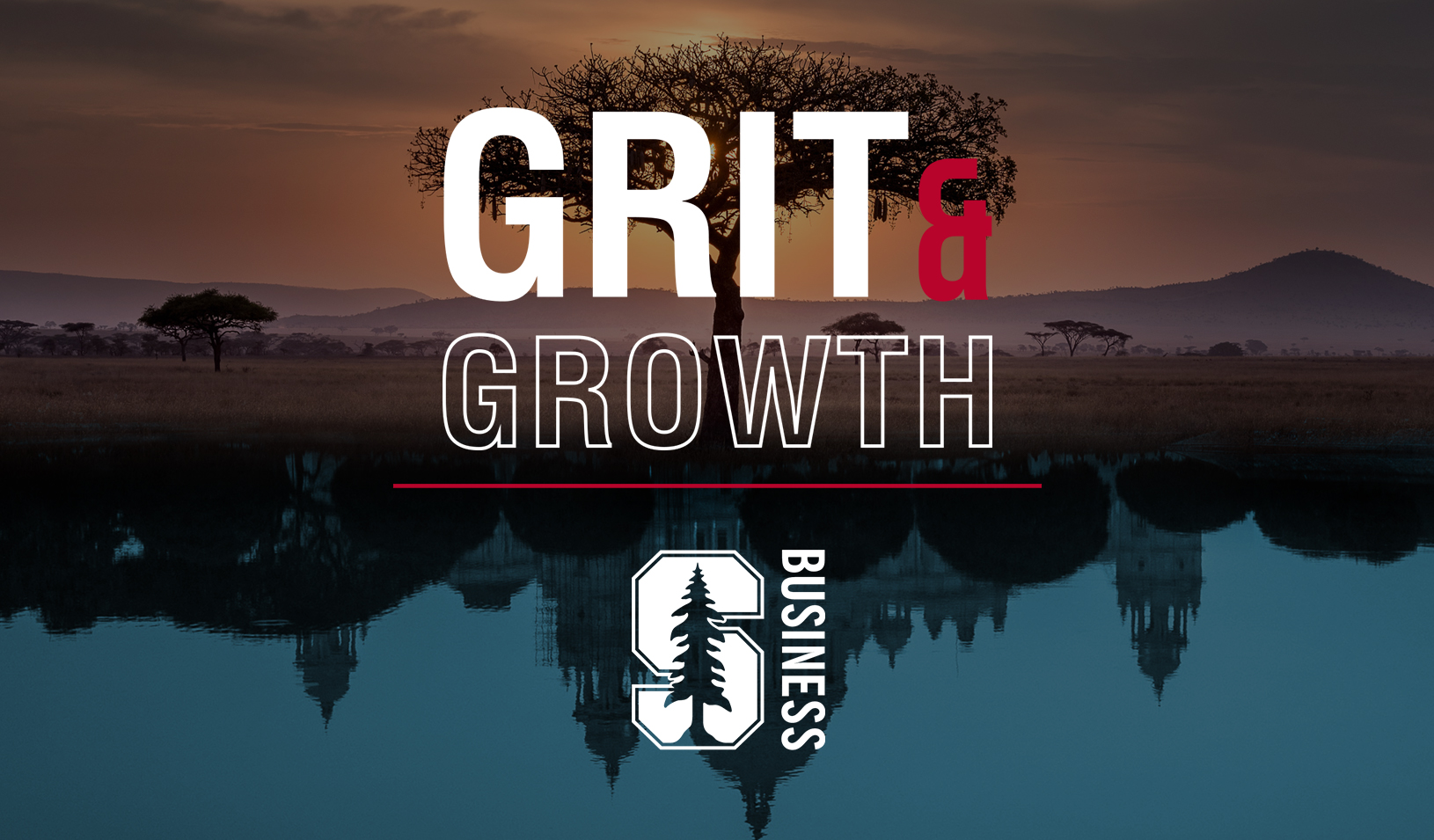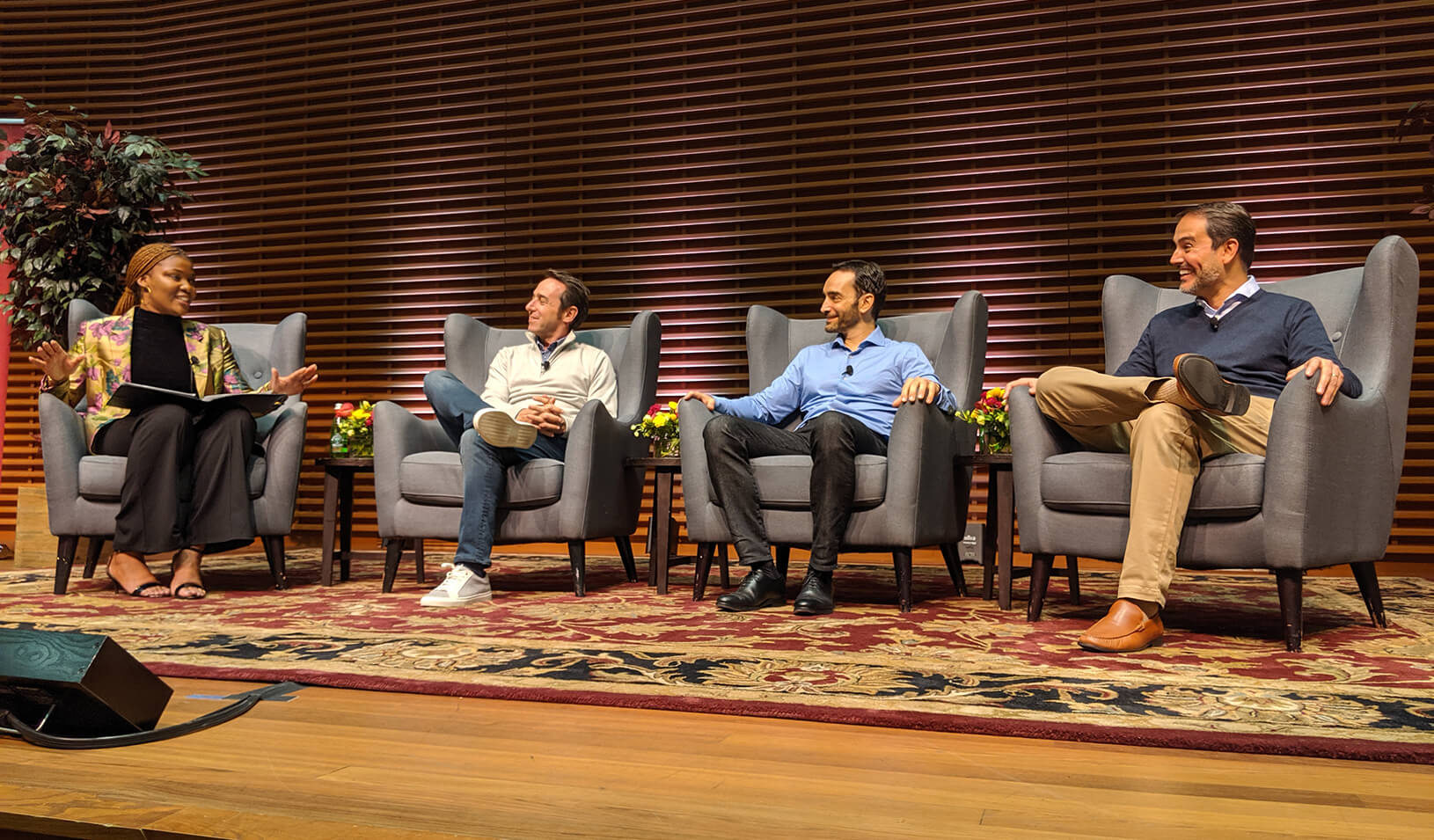
Is the pizza market ready for technological overhaul? Zume Pizza thinks so. | iStock/franckreporter
Julia Collins is a co-owner of four restaurants in New York City and has worked with Danny Meyer, one of the most celebrated restaurateurs in the country. Yet she will tell you that some of the most delicious food she’s ever tasted was on a water buffalo farm in Southern Italy, where she lived for six months in 2009. There, she learned traditional ways of la cucina povera — peasant cooking. The farm’s staff served fresh, local food in a way that was affordable to the entire community. Collins returned to the U.S. with a newfound mission to address the food crisis in America.
“People at the top of the pyramid in the U.S. have access to quality, healthy food,” she says, “but people in the middle and at the base are struggling.”

Zume Pizza co-founder and CEO, Julia Collins | Drew Kelly
Collins, who received her MBA from Stanford Graduate School of Business in 2009, partnered with Alex Garden, former president of online game producer Zynga. Like Collins, Garden is an engineer and foodie, and together they decided to merge modern technology and old-world cooking techniques to make and deliver healthier pizza.
Today, Collins and Garden are cofounders and co-CEOs of Zume Pizza, which uses a combination of robots, humans, and what they call “food delivery vehicles,” which are outfitted with computer-activated ovens so pizza can be baked along the way. Their mission is to make and deliver fresh pizza with locally-sourced ingredients.
“Pizza is a $40 billion industry and 40% of the market is controlled by four companies who use chemicals and additives to trick the palate,” says Collins. “We knew that there was a better way to give people healthy, affordable food — and do it fast.”
As a co-CEO, how do you maintain balance in the company, and how do you decide who does what?
Zume is a food company, a robotics company, a logistics company, a software company, and a packaging company. It’s a complex business. Given the pace of development and the breadth of what we want to conquer, it makes sense to have two strong, vocal people leading the company. It starts with trust and continues with frequent and active communication. We’re lucky that we have a natural affinity for each other, a natural camaraderie and friendship. You can’t engineer that. You also have to be disciplined about how decisions get made and what to do when you disagree.
What is the deciding factor when you disagree?
One of our values is that the best idea wins, period. We’ve divided the company across functions. I handle everything related to food, finance, and operations. Alex focuses on technology, product, design, and marketing. We’re both passionate about growing and developing our teams so the human resources piece is roughly divided between the two of us.
You’re both engineers, so when there’s an engineering argument, how do you choose who wins?
You keep the discussion going until both parties agree that you’ve reached the right outcome.
Can you give an example?
In order to design the world’s first baked-on-the-way food delivery vehicle, we had to start from scratch. In addition to the engineering, we had to get approval at the federal, state, and county level. One of our design imperatives was to simplify as much as possible. It was very important to me that we have refrigeration in the truck. We went back and forth and ultimately decided to get the first truck licensed, then add refrigeration at the first possible opportunity.
What about your pizza is healthy?
Most delivery pizza is designed to survive “dwell time,” which means the time between when it is cooked and when it is delivered. A delivered pizza will often spend 45 minutes or more in a cardboard box. Larger companies compensate for the loss of flavor during dwell time with chemical stabilizers, and they often add sugar to mask the low quality of their ingredients.
Zume’s approach to making healthy food begins with our sourcing, which is radically different from the big pizza companies. One hundred percent of our produce comes from local farms. All of our meat is naturally and ethically raised. Our menu is seasonal and flexible. Great pizza begins on a farm, not in a laboratory. We work with our farmers and food producers to create menus based on what is abundant and at the peak of flavor in every season.
We do not add sugar to any of our products. We make the dough in a traditional way: You use a mother dough and let it ferment naturally, then allow the dough to age for at least 24 hours. The flavor comes from the long fermenting, as opposed to using smoke and mirrors and chemistry.
What do your robots do?
Right now we have four robots on our production line and a fifth is being installed soon. Our most well-known robot is Bruno, a six-axis robot that takes pizza off a conveyer belt and puts it into the oven. The robots are designed to do the same motion safely, over and over again. They’re assisting the chef, not doing all the cooking. Our cooks often tell us that it’s the best kitchen job they’ve ever had because their backs don’t hurt, they aren’t doing repetitive motions, and they can focus on the things people love to do in the kitchen, like quality control, tasting, and developing recipes.
What part of the process will not be done by robots?
Recipes. You can do lots of research around AI and machine learning to create pizza recipes but food needs to be made with love and empathy. When our chef makes a recipe, he is drawing from his culture, his history, and his knowledge of the ingredients.
What jobs will be taken over by robots in the next few years? And what probably never will?
We are automating tasks, not automating an occupation. The idea that robots will take away the entire occupation of being a chef is really misleading. Zume has created more than 70 jobs in our community. All of our employees have fully subsidized health, vision, and dental insurance. They are shareholders in the company. It’s my responsibility to be at the leading edge of advocating for human beings. I take this responsibility very seriously.
How does AI play into your service?
People tend to order the same pizzas on the same days of the week and the same times of day. We leverage the habitual nature of pizza ordering to predict what people will order. Our AI tells us hour-by-hour what pizzas need to be made. Our delivery vehicles are optimized to enable forward deployment and field reloading. AI allows us to pre-load inventory and then station our vehicles near the locations where we expect to receive orders. Decentralized inventory allows us to shorten the distance between the pizza oven and the delivery location. This means that every pizza arrives hot out of the oven, just a few minutes after it finishes cooking.
I imagine the equipment must be costly. Is it really more profitable to use robots to make pizza rather than people?
The robots look super cool but they are not tremendously expensive. It costs between $20,000 and $50,000 per robot cell. These have a useful life of up to a decade or more. By investing in automation, we save money on labor and reinvest the dollars we save into higher-quality ingredients.
Why is now the right time for this business?
I am owner of four restaurants in New York City. Rising rents are so insurmountable that it makes the traditional restaurant model nearly impossible to sustain over a long period. Owning a restaurant is one of the most difficult ways to make a buck. Most operators are going out of business after three years. I realized that I could either watch my industry be disrupted or I could choose to be at the leading edge of the disruption and show others how they can change and adapt.
What was your first paying job?
I used to pick my neighbor’s flowers and make them into bouquets and resell them. After that, I ran a cookie and lemonade stand, then a car-washing business. I also had a babysitting business where I charged double the market rate because I offered homework help.
What is the best business book you have read?
Setting the Table by Danny Meyer. I come back to it again and again. It really matters how you treat the people who are running your business. You start with treating your team well and then you let that goodness extend to your customer and then to your community. In order to serve your customers, you have to invest in and love your team first.
What do you think is the greatest innovation in the past decade?
I love social media platforms, especially Snapchat. I recently moved to the Bay Area from New York City, where I’d lived for 14 years. The move was a lonely experience in many ways. Being able to get a real-time updates on what my friends are doing has been wonderful for me.
For media inquiries, visit the Newsroom.






